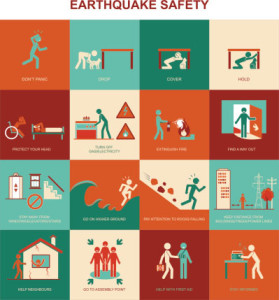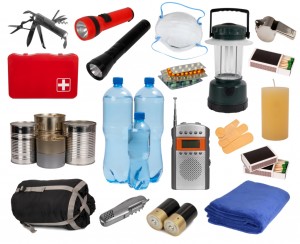SUN SMART: Prepared Neighbors makes us all safer in an emergency.
Recently the New Yorker Magazine published an article called THE REALLY BIG ONE which outlined what will happen during an expected earthquake in the pacific NW. The article makes a strong case for being prepared for an emergencies, in general. Although there is no need to panic, it does remind us that having a plan, just in case, is better than not having a plan. In the near future we will be adding to this website more information on how we can prepare individually and together. Until then, you can check out the UO public Forum video and the Red Cross checklist for home emergency kits below.
Click on this graphic to watch the UO Presentation on “The Really Big One”A Public Forum on Earthquakes in the Pacific NW:
What you have on hand when a disaster strikes can make a big difference for your comfort and safety in the hours and days following the disaster. Basic services, such as electricity, gas, water and telephones, may be cut off, or you may have to evacuate at a moment’s notice. If you are confined at home, it may take some time for professional emergency responders to get to you, so plan on storing enough supplies for everyone in the family for at least 3 days.
When preparing for a possible emergency situation, it’s best to think first about the basics of survival: fresh water, food, clean air and warmth. Click here for an excellent downloadable and printable version of an Emergency Supply Kit shopping list. The basics include:
- Water, one gallon of water per person per day for at least three days, for drinking and sanitation
- Food, at least a three-day supply of non-perishable food
- Battery-powered or hand crank radio and a NOAA Weather Radio with tone alert and extra batteries for both
- Flashlight and extra batteries
- First aid kit
- Whistle to signal for help
- Dust mask, to help filter contaminated air and plastic sheeting and duct tape to shelter-in-place
- Moist towelettes, garbage bags and plastic ties for personal sanitation
- Keep a smaller version of the kit in the trunk of your car. If you become stranded or are not able to return home, having some items with you will help you be more comfortable until help arrives.



